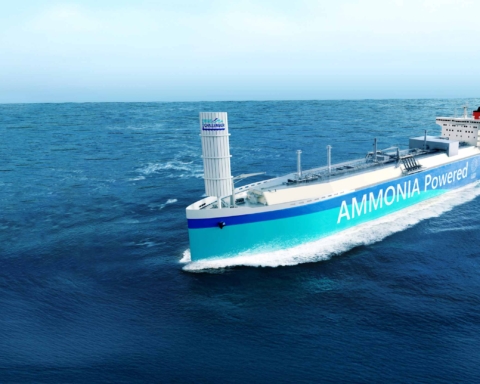The autonomous ship concept is not easy to define, above all because it often overlaps with the unmanned ship concept. Indeed, the terms “unmanned ship”, “autonomous ship” and the acronyms USV (“Unmanned Surface Vessel”) MASS (“Maritime Autonomous Surface Ship”) and MAV (“Maritime Autonomous Vessel”) are often used indistinctively,
In a nutshell, these vessels can have various levels of autonomy and be manned, or not, with a crew, who can, in turn, take operational decisions, if necessary (e.g. in case of emergency), or simply work on the ship for other purposes (e.g. its maintenance). The only “certainty” is that these vessels don’t have a captain. They are connected to a remote-control center, called shore control center (SCC), manned by a number of different experts, including the shore based operator (SBO).
In terms of levels of autonomy, the vessels in question can be managed remotely, or can be “semi-” or “fully” autonomous (some research even suggests 7 or more levels of autonomy). The latter are conducted remotely, through a wireless connection, based on data collected with radar, satellite imagery and other technological tools. The semi-autonomous ships, instead, operate according to the range of instructions they receive, under human supervision, with the power to correct or ignore these instructions. The completely autonomous units, finally, do not require any human intervention in decision-taking, since they act according to the programming they receive using artificial intelligence. In fact, they elaborate an “independent opinion.”
There have been a number of studies dedicated to autonomous ships, including, among others, the CMI position paper; the IMO’s Regulatory Scoping Exercise (RSE) and Interim Guidelines; the MUNIN (Maritime Unmanned Navigation Through Intelligence in Networks) and AAWA (Advanced Autonomous Waterborne Applications Initiative) projects. Some vessels are already operational (including the C-Worker 7, the Folgefonn and the Yara Birkeland). Finally, it should be pointed out that the pleasure boating reform has introduced articles 27 bis and 3, c, 1. lett. h) regulating remote control pleasure craft. Its practical implementation in recreational boating gives rise to a number of perplexities, in my opinion.
There are many issues concerning autonomous vessels, such as liability issues, the use of technical-nautical services, rescue, etc. First and foremost, these vessels pose new problems in terms of crew and captain.
Crew
The crew, as mentioned above, may or may not be present on the vessel, and perform various tasks on board.
From the point of view of international law, the current conventions all envisage the presence of personnel on board. For example, art. 94 of UNCLOS (“each ship is in the charge of a master and officers”), reg. 14 in chapter 5 of SOLAS (“all ships shall be sufficiently and efficiently manned”), COLREG’s reg. 5 “maintain a proper look out by sight and hearing”), STCW’s art. III (“properly man, equip and supply”). It seems to be difficult to get round the clear wording of these provisions by applying them in the same way to the remote-control center personnel.
An additional hurdle to equating SCC with crew can be found in the IMO Principles of Minimum Safe Manning guidelines, which contain certain provisions that are logically incompatible with the total absence of crew.
The issue is no stranger to the IMO itself, which believes that the notion of “seafarer” should be modified, to include SCC personnel as well.
The captain
As far as the captain is concerned, many of his duties cannot be performed from a location other than the ship itself and are difficult to delegate to remote-control center personnel. These include checking the seaworthiness of the vessel, its proper rigging, equipment, loading and stowage, checking the ship’s documents and carrying out operations in the event of malfunctions on board, not to mention privately performing public duties.
Besides, it is difficult to equate the captain with the SCC, organized with work shifts like any office. The SCC allows the vessel to be managed by a number of operators who, taking turns in the control center, contribute to debunk the saying “one ship, one commander.” Moreover, the remote operator is a person who, at a distance, takes over the technical management of the vessel, performing a relatively limited task which is not fully comparable with being in command on board,
Conclusions
While waiting for the appropriate regulatory measures, autonomous navigation has already begun. Recalling Irti and Severino’s “Dialogue on law and technology”, it can certainly be said that technology has, in autonomous ships, preceded the law. From this point of view, I presume that the vessels already operating will show the way to legislators, directing their no longer deferrable intervention. On the other hand, technology needs law in order to fully accomplish its purpose. In this case, an ad hoc regulation will probably be necessary, because limiting itself to amending the existing regulatory framework would require an effort that would be very difficult to sustain.
Translation by Giles Foster




